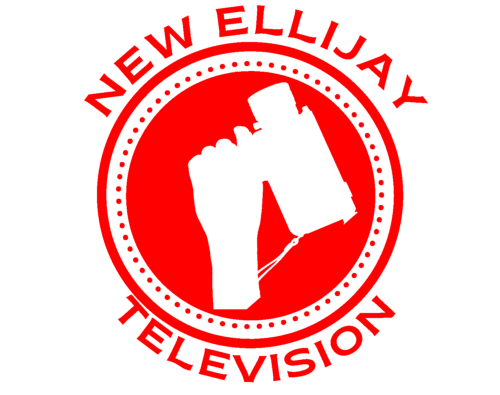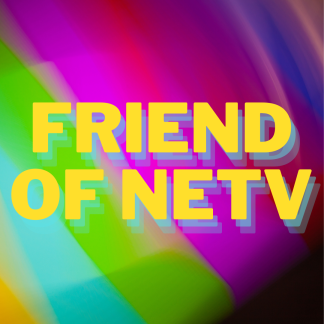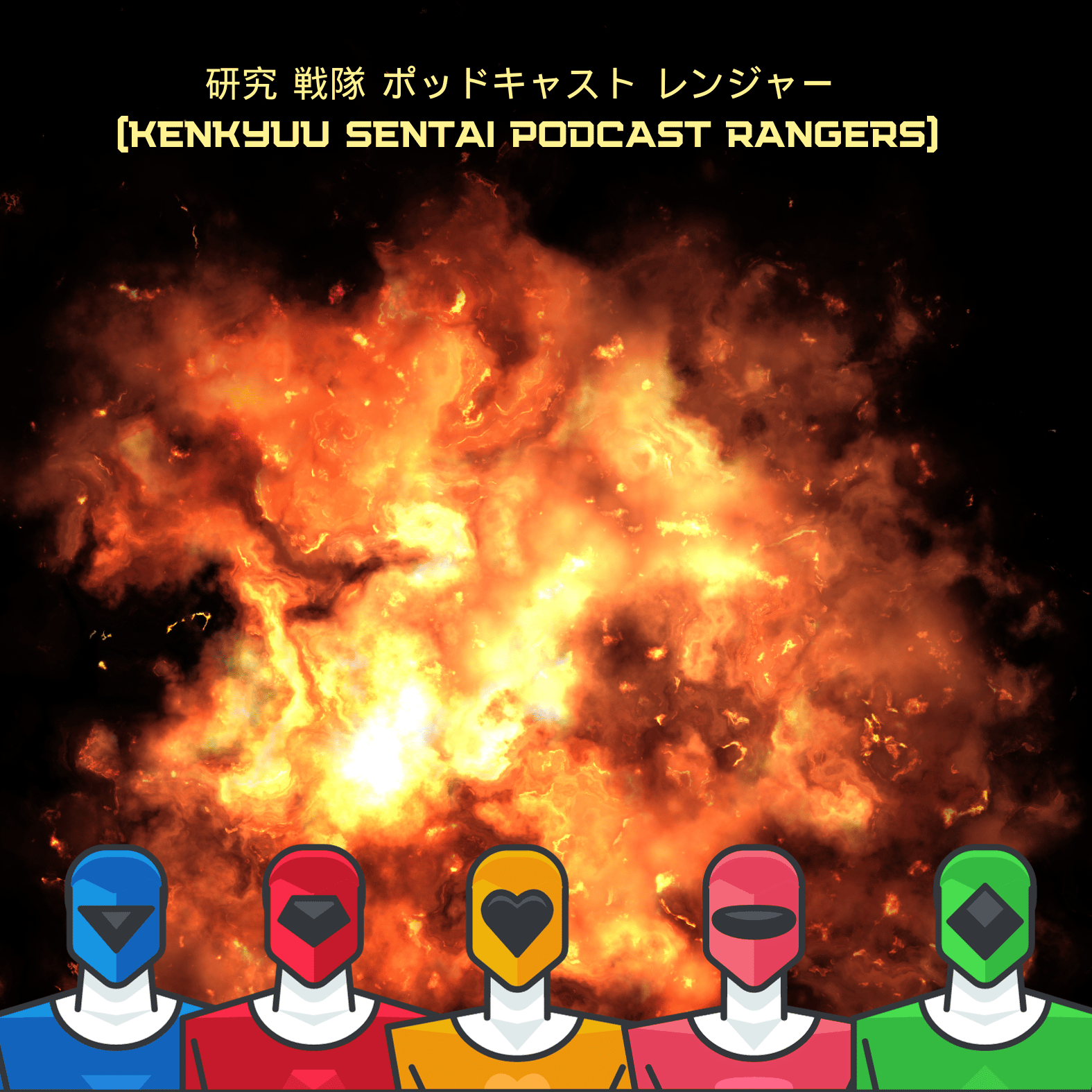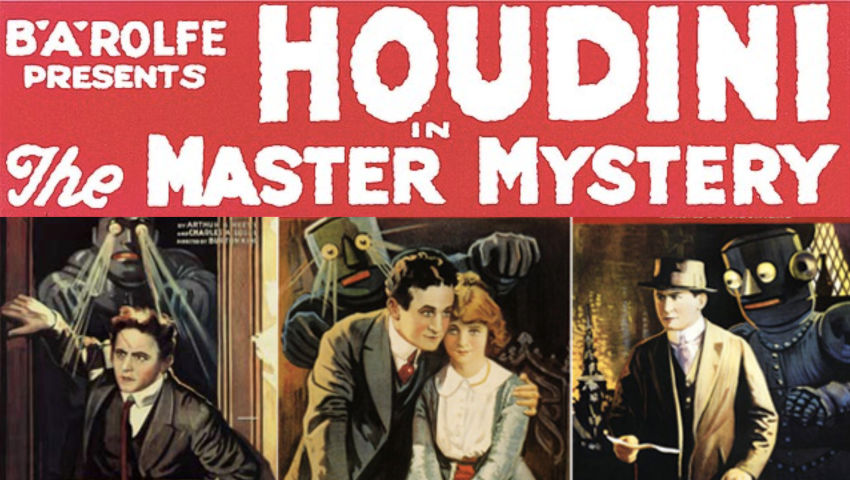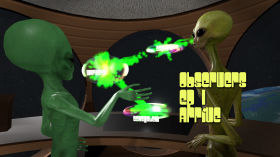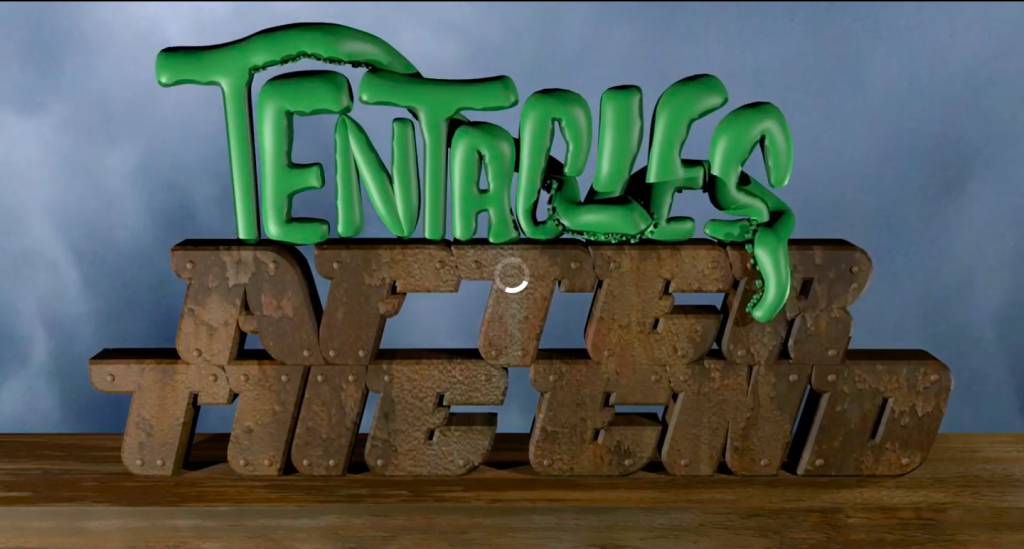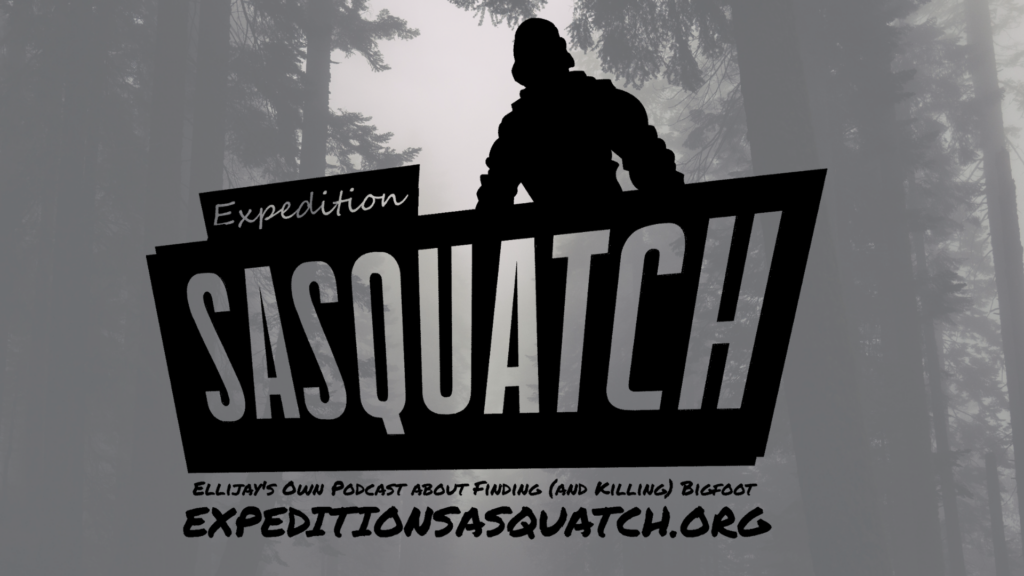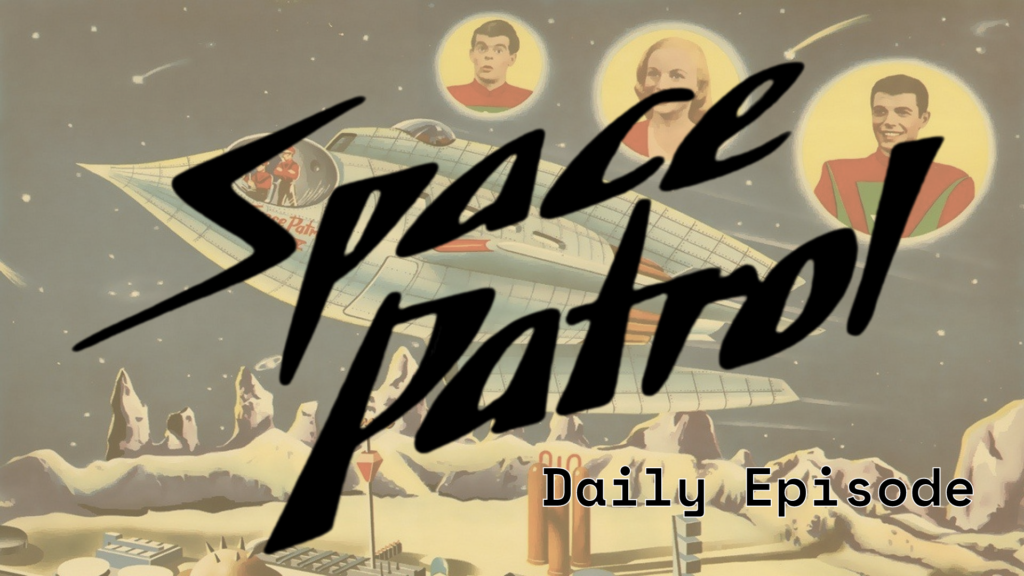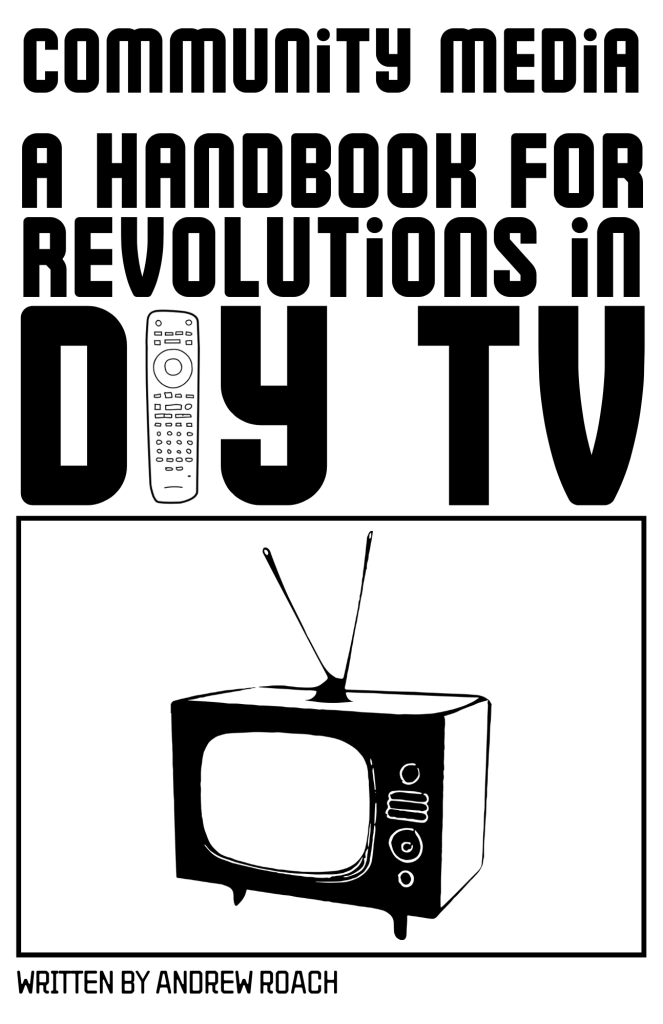
Ethan: I am still embarrassed about it to- He’s dead! He died and I’m still embarrassed about it to this day. Miserable.
Nelson, distantly: Alright, you guys are good to go.
Andrew and Violet: Cool.
Ethan: Yeah, should we clap again?
Nelson: Sure. Yes, on three.
Ethan: No!
Violet: Wait, what?
Ethan: It’s not on three. It’s on zero coming down from three.
Nelson: Oh, so we’re counting down.
Ethan: Yes!
All: Three, two, one, clap!
[“It’s morphin time!” + intro music]
Andrew: All right, so we know how this episode starts.
Nelson: Yeah!
Ethan: Okay… minna-san, yokoso. Welcome to your favorite cost-cultural deep dive analysis and recap podcast for Power Rangers and Super Sentai, Kenkyuu Sentai Podcast Rangers. My name is Ethan, I use he/him pronouns, and with me as always is my usual co-host, Andrew.
Andrew: Hey everybody, my name is Andrew. I also use he/him pronouns.
Ethan: Joining us again is our good friend and actual literal rock star Violet. Hey, Violet!
Violet: Hi, I’m Violet; I use she/her pronouns. I am apparently a literal rock star.
Ethan: I have watched you jump off stage in the middle of a guitar solo-
Andrew: Yeah, that’s true.
Ethan: -to an adoring crowd. Actual literal rock star.
Violet: Okay, this is gonna sound really dumb, but which time?
Ethan: Uh huh, thank you for making my point. Today we are recapping and discussing Kyoryu Sentai Zyuranger episode 4 “Yomigaere Densestu no Buki, Reawaken, Legendary Weapons!” and Mighty Morphin Power Rangers season 1, episode 4, “A Pressing Engagement.” You can tell which title I think is cooler. Unless we have any housekeeping up front, let’s get into the recap!
[“Kyoryu Sentai… Zyuranger!!”]
“Reawaken! Legendary Weapons!” was written by Sugimora Noboru and directed by Ogasawara Takeshi. It starts with a recap of the previous episode, “Fight in the Land of Despair,” and then Dora Minotaur retreats and the Guardian Beasts eject the Rangers from the cockpits, as they must claim the weapons by their own power, so you can’t just take your Tyrannosaurus Zord right up to the castle, you got to actually hike up there.
Andrew: Okay, we talked about this a little bit in episode one [sic], but why the retreat?
Ethan: So Bandora is the one who calls out that the Land of Despair becomes freezing cold at night.
Andrew: Right.
Ethan: I think there may be something going on with the fact that the monsters are made of clay, maybe they can’t fight in freezing temperatures, but it’s not actually ever addressed. It’s- we’ll call this a Power Rangers moment.
Andrew: Sure. Also, how did the- how does the Zord get to the Land of Despair?
Ethan: I call that out in my notes like at least twice. They just show up! How did they get there? So the Rangers get there through Geki’s magical stasis door. They reopen it and instead of the sort of like void that the other Rangers were sleeping in, it’s a island floating in the middle of the abyss, and it’s like, hmm, so interesting cosmology. Geki, Dan, and Goushi break through an invisible wall after walking in circles for a while while Mei and Boi navigate a trick door. It’s- it’s a door with two knobs, and if you open one side, flames shoot out and if you open the other side you get teleported to your friends, so it’s really 50/50 chance, it’s not that big of a trick door.
Violet: Yeah, and you can close the door before the flames get you.
Ethan: Exactly, exactly. You just sort of come around on the side and then open it.
Violet: Really low stakes.
Ethan: The Rangers are reunited and make it into the castle where they must face a final test: a sword possessed by an evil spirit. Dan is the first one to touch it, but Geki is the one to draw it and release it, revealing the way to the legendary weapons. The makeup that they use in this portion is really cool, I think. Naturally the Bandora Gang is waiting for them and Bandora paralyzes the Rangers knowing that the clock has run down on them and they’re due to turn to statues at any moment. She’s right, and her plan almost works, but Geki calls out to the weapons, appealing to their sense of justice, and it actually works! The weapons awaken and loan the Rangers their power. Bandora is unhappy with this turn of events and makes herself giant, which shocked me, because I did not remember that for my initial watchthrough, and starts shaking the floating island like a magic 8 ball. The Rangers power through, transform, and then use their new weapons to form the Howling Cannon and blast Dora Minotaur to bits. Furious, Bandora decides to destroy the Land of Despair, but the Rangers escape just before she gets them, and with Hiroshi’s mother’s tears having restored Hiroshi to life, everybody gets away alive. But Bandora appears in a vision and makes sure to threaten the Rangers once again.
Andrew: And all children everywhere.
Ethan: Yeah, all she hates all children everywhere. I think there is a monologue bit in this episode, or the last one, where she’s just like, “I hate all children!” and Pleprichaun goes, “Why though?” and she’s like “Don’t ask me questions!” That’s important! That’ll come up again later. Impressions on this episode, my dear co-host and guest?
Andrew: I thought it was great.
Ethan: Yeah, it’s a good one.
Violet: It was good episode. I will say, jumping straight to the end: I know that we never get Hiroshi’s mom’s name. She’s only called Hiroshi’s mom, even by the Rangers. And then… I’m just saying she felt despair, and the stakes would have been way higher if they were just both statues at the end.
Ethan: Mhm.
Violet: And then they would be like, “We’re not afraid to kill children, and their mom!”
Ethan: The previous episode ends up with Hiroshi- like, we watched that kid die. He is, he is-
Violet: Yeah, but they like retconned it. So it’s like, no-
Ethan: Love of a mother, the mother’s tears, all that stuff.
Violet: No, she was crying. She was despairing. She’s also a statue.
Ethan: Yeah, no, you’re correct. You know, when they find her, she’s like laying in a room in the cave and it’s like how long has she been here?
Violet: Yeah, just 24 hours not apply to them because like-?
Andrew: She wasn’t questing for the sword.
Ethan: She wasn’t questing, she also appeared to have been passed out. So maybe-
Andrew: You have to be conscious?
Ethan: I don’t know, there’s-
Violet: Just a nap your way through.
Ethan: Interesting.
Andrew: One thing that I noticed in this episode, or one thing that stood out to me in this episode, was that the sequence with the evil sword was really reminiscent of a ton of Chinese films. It felt like a kung fu movie. I’m sure that there are also parallels in Japanese cinema, but I can’t recall one, where that sequence felt like something straight out of of Hong Kong circa, you know, 1970. Which is awesome! I want to make that clear, like anything that they can do to make Power Rangers or Super Sentai more like Hong Kong Kung Fu is aces in my book.
Ethan: You are going to love Dairanger.
Andrew: Which one’s that?
Ethan: That’s the next one.
Andrew: Okay, so so halfway through season two.
Ethan: I think the start of season two.
Andrew: Okay season two, cool.
Violet: Okay, so in three years, you can enjoy it.
Andrew: Three years!
Nelson, distantly: How many episodes are in season one?
Andrew: Sixty. [Note: Sixty episodes in s1 of MMPR, fifty of Zyuranger. 55 planned episodes in s1 of KSPR.]
Nelson: What?!
Andrew: Yeah, yeah, December of 25 is when we finish at the current rate. We’re gonna have to step it up! We’re gonna have to bring in more hosts!
Ethan: The one thing that I think stood out to me most in this episode is, how did they get that like gooey statue effect, like, what is that stuff? Like did they do like plastic wrap around the feet and then like some sort of putty compound on top of that? It looks really yucky.
Violet: It does look really yucky.
Ethan: It looks really really shiny and wet and looks uncomfortable and I would hate to touch it.
Andrew: Obviously we talked about this in the last episode, but the Minotaur is small for for this the entirety of this episode.
Ethan: Right, so I think he wouldn’t fit into the palace on the moon as a giant, and it’s probably like one of those like MMORPG buffs that disappears if you use fast travel, or something.
Andrew: But that is the reason that in the last episode of Power Rangers, we ended up with the Rangers suddenly teleporting back to a small Minotaur.
Ethan: Mhm, that’s exactly right. He shows up in the Land of Despair again, normal size, and they can take him on this time because all five of them are there, and they have their their legendary weapons, each of which has a name. It’s super cool. My favorite is Goushi’s Moth Breaker, that’s just sick. I love- we’ll get into this, you know, the further we get in the show, but I love watching that actor and his suit actor fight. That’s some of my favorite choreography in the show, is specifically Goushi and the Black Ranger, with just a big axe just absolutely wailing on people. It’s so good.
Andrew: An axe that’s also a gun.
Ethan: Yeah. He does a high kick in this episode, before transforming, that’s like… that thing went all the way up there. I think that covers it for Zyuranger; you want to get into the Rangers recap?
Andrew: Yeah, I can do the Rangers recap.
Ethan, musically: Rangers recap~.
Andrew: I took notes again.
[“It’s morphin’ time!” + theme music]
Ethan: What’s this episode called?
Andrew: This episode of Power Rangers called “A Pressing Engagement” and, I will say from the top, it was better than the last episode, but only by a little bit. Okay, this episode opens up in the gym/cafe where the Power Rangers always hang out.
Ethan: Angel Grove Youth Center and Juice Bar, or whatever.
Andrew: Gym and juice bar.
Ethan: Ernie’s joint.
Andrew: Gymnasium and juice bar. And this is just such a weird thing. Why is there a juice bar in the gym? And it’s like just right in the middle of the gym? It’s not like a separate room. Gyms stink!
Violet: They do stink.
Andrew: And this is a teenager gym! And so the Power Rangers are always just like playing with food and eating food in the middle of just the stinkiest- Anyway, Kimmy is doing gymnastics and Jason is bench pressing.
Ethan: Trying to set a record.
Andrew: He is trying to break some kind of record. When the episode opens, he’s around a thousand reps and Ernie loses count. This is played for laughs, but like this is the first time in the episode that Jason hits a thousand reps in his-
Ethan: He is, like, he is sweating. I mean, I don’t- I couldn’t tell from just what from watching how much weight he’s using here, but like and obviously it’s-
Andrew: It’s fake.
Ethan: It’s fake anyway, but like he is sweating.
Andrew: Yeah. So Rita, who is watching this because again, she just watches the Power Rangers as if they are a sitcom-
Ethan: Important to note: Rita’s telescope in Power Rangers has a crosshairs in it, but Bandora’s telescope in Zyuranger does not. So like, I don’t know what kind of gun culture obsession thing that is, but like I did notice that.
Andrew: Rita decides to have Jason fight Goldar one-on-one, in what might be the most foolish decision she’s made on the show so far, considering Jason’s performance to date. She’s like hey, let’s isolate the one of them who has the best chance of defeating Goldar and have Goldar fight him.
Violet: They couldn’t pick like Billy or something like that?
Ethan and Andrew: Right!
Andrew: They have established that Jason is not only the leader, but the strongest, and the only one whose Zord has been shown fighting on its own. He is the least appropriate choice. Anyway, Jason drops his barbell a few seconds before finishing his 1,010th rep, as the result of silly shenanigans between Kimmy and Zack. I believe that this is supposed to be the second set of a thousand, at this point, because they already lost count during the first set, so the implication is that he has done a thousand more reps.
Violet: I couldn’t tell: is this supposed to be the same day?
Andrew: I assume so.
Violet: Because that’s like two-
Ethan: I think it is, yeah. There are a lot of cuts in this first sort of portion of the show.
Andrew: This is supposed to be minutes later, the best I can tell, and they do this silly chewing gum thing, and it’s very bad.
Violet: Like even at bar weight that is so much to lift!
Andrew: Right! Zack apologizes to Jason. He then apologizes to Kimmy, really poorly, and Kimmy says, “Forget it; it’s casual,” which is how I’m going to respond to all apologies for the rest of my life. Jason is like really unreasonably obsessed with breaking this record in a way that seems really unhealthy and I’m worried for him.
Ethan: We find out also that it’s actually Bulk’s record.
Andrew: Yes. That is the next line in my recap, is that Bulk holds this record.
Ethan: This part, and then the sort of confrontation between Bulk and Jason where Jason tickles him- I mentioned this last episode, but this to me is some like, ‘we’ve known each other since we were six years old’ type s***. And like, if they were ever like, friends-friends, they’ve obviously grown apart as they’ve gotten older and like, I assume high school seniors. Of course, they all look 25, because they were. But like-
Andrew: And there’s this like vague implication that Bulk and Skull are older than, or at least Bulk is older than Jason, because otherwise, why would Bulk hold the record and not Jason?
Ethan: And we don’t ever see Bulk like ever bench pressing ever in the show, so it’s just sort of a fact that’s spoken into existence. But the dynamic here is interesting and I’m curious to see if more of the show supports like a past relationship between them. Because like if Jason and Bulk were friends in elementary school who grew apart and had wildly different paths so far in life, that adds a lot of weight to the show, I think.
Andrew: It also explains a little bit of his unnatural obsession with them and the way that they are so casually cruel to him. So there’s a fight, and there’s tickling, and Bulk tears his jeans revealing boxers with pigs on them.
Ethan: They’re huge. They’re like comically enormous boxers.
Andrew: This show is not subtle.
Ethan: No.
Andrew: Never. Not ever. Bulk then falls on his face while everyone laughs. Go figure. Jason is obsessed with proving that he can handle things for himself, in flagrant contradiction of the last episode. The last episode was literally called “Teamwork!” Kimmy, Zack, and Jason morph and teleport to a theater, where they engage in brief combat with Putties and a barely seen gooey black monster. At several points Jason is seen holding a gooey black monster. No explanation!
Ethan: So those are Captain Putties, or at least they’re they’re supposed to be. I forget the exact… the Japanese name, but they are like more durable, smarter type of Golem from Zyuranger, but you’re right, it’s given no…
Andrew: Yeah, he’s just there.
Ethan: Some Putties just look like that.
Andrew: And then there’s a sphinx. The sphinx then teleports and demorphs Kimberley and Zack back to the combo gym/lunch room. He just flaps his wings and they get turned back into normal people and teleported a long distance. That’s an incredibly powerful monster.
Ethan: Yes. Rolling back one second, Zordon says Rita wants to gain control of the park. … What is the point? Why would she bother? What- is it tactically situated next to City Hall or-? I mean, there’s- He states that she has a goal, but no motivation for the goal and it’s just very weird.
Andrew: I mean that’s Power Rangers.
Violet: Chaotic evil. I just want it because it’s there.
Andrew: But she never even says she wants it, Zordon does! So the Red Ranger engages in combat, and Alpha panics. I don’t know why Alpha panics, but Alpha panics. So far all we’ve seen the Sphinx do is teleport people away, so like at best the reason that Alpha is panicking is that the Sphinx might escape? But like the the villains always escape. The Red Ranger and the sphinx then suddenly teleport to another location and continue fighting. All the dialogue centers on Jason’s insecurities about doing things himself and suddenly Goldar is here! Rita throws her staff and says “Take that!” Again, rather than “Make my monster grow!” which again makes me sad. And now Goldar and the Sphinx grow to giant size. So now we’ve got Jason–small human Jason–fighting giant Goldar and Sphinx. Jason laments that the other Rangers are not present, but doesn’t contact them? In spite of the fact that he has a communicator, and doesn’t call his Zord in spite of the fact that we have demonstrated that his Zord is more than capable of taking on many monsters by itself. The others are now concerned with his well-being and teleport themselves to… What’s it called? Ranger center? Command Center?
Ethan: Well, they go to Billy’s lab first, which I guess is just like the garage at Billy’s house.
Andrew: Right, and this is the first time we’ve seen that.
Ethan: And it is so goofy looking in there, but I would have loved to like tour that set. I would have been all over everything. It’s kind of adorable.
Andrew: So they get they get teleported to the Command Center to watch Jason be attacked by the two giant monsters on the viewing orb. In spite of the fact that everybody says that they’re worried, they don’t do anything about it. They just stand there and watch it happen on the viewing orb and then-
Ethan: That is what they do.
Andrew: -Zordon says put your hands together and bring forth the Power Crystals. This bit is complete nonsense, makes no sense, has no continuity…
Ethan: It will make sense in the next episode of Zyuranger, episode 6.
Andrew: I’m sure.
Ethan: But this is another instance where the the pacing issues that we’ve been discussing have really, really, really done harm to Power Rangers as a show.
Andrew: So Alpha is gonna take these crystals and send them over the Morph Grid or whatever it’s called. It’s nonsense. It makes no sense. It does however make Jason’s sword collapse a mountain and that’s neat.
Ethan: It’s pretty sick.
Andrew: Jason then goes and receives the Crystals which he has no reason to no exist, at great personal risk.
Ethan: He instantly knows what they are and what to do with them, despite the fact that the other four Rangers only just now found out from Zordon that: One, Power Crystals exist; Two, they are a tool for you to use; And three, you already have access to them, seconds before this happens, and Jason’s just like, “Oh, yeah, bag of Power Crystals, I gotchu.”
Andrew: And for some reason, not only does he know what the crystals are, but he can use them to summon the other Rangers, so he does. Again, it’s it’s patent nonsense. I’m sure it will be explained when we get to that Zyuranger episode, but but I haven’t seen that Zyuranger episode yet, and so it’s just nonsense.
Ethan: Yeah, it makes less than no sense. It’s actively confusing.
Andrew: Kimmy makes another pun while they’re forming the Zord
Ethan: “Jinx the sphinx!” I wrote that one down because, oh my god.
Andrew: And like I said, I’m assuming that this becomes a thing. I know in some subsequent episodes, she at least strays from puns and moves more towards Valley Girl stuff, but everybody else’s thing that they say when they get in the Zord makes sense, and Kimmy’s is always something to make her seem unintelligent, and and I don’t love that.
Ethan: I don’t even think it’s that. You’re right to point it out as like, at odds with her character because puns can be very difficult and tricky to come up with, so she’s like doing some weird literary s***, and like thinking of rhymes and things beforehand, which doesn’t fit with what we’ve seen of her character. But I do love the idea of like secret literature nerd Kimberly.
Andrew: Sure!
Violet: I’m here for it. I’m here for secret literature nerd Kimberly, cuz like, the idea of just acting dumb for fun is a great idea.
Andrew: Sure. Lady Moonbeam does a great job of that.
Violet: Lady Moonbeam. She’s Dr. Lady Moonbeam.
Andrew: Dr. Lady Moonbeam.
Ethan: I don’t… believe that.
Andrew: I mean, she she tells everybody she’s doctor lady-.
Ethan: I don’t doubt that she tells everyone that.
Andrew: Lady Moonbeam is Violet’s character on Jupiter’s Ghost, which is an entirely different thing that we won’t talk about today. So the Power Rangers, they board the Zords, and then they take these crystals, which again came out of their own bodies, and they shove them into some kind of receptacle within the Zords. They know how to do this for some reason. They know that this is possible, this is gonna power up the Zords, apparently. They then stay in vehicle mode, rather than going full stand up Megazord mode, and use the Crystal Cannon, which again, they just suddenly know exists for some reason. This fails and produces the only tension this episode has. There is a very brief moment of tension in this episode for the first time here. But then they transform into the real Megazord and they have a great battle. It really is a wonderful battle, aside from the inexplicable switch back to tank mode in the middle that lasts for like half a second-
Ethan: I thought that was a good bit, but it’s weird pacing.
Andrew: It is, it’s a weird pacing thing, but aside from that the battle is fantastic. Having the two monsters fighting against the Megazord is just a great thing to see, and then at the end of this, again for reasons that are never fully explained, they know that they have a new sword, so they summon the new sword for the Megazord and that’s also sick as f***. Goldar escapes, Rita throws a tantrum, and then we’re back at the gym/cafe where Jason does his third set of a thousand reps of the day. And then there’s cake.
Violet: And then there’s cake!
Andrew: Bulk and Skull show up, it goes exactly as expected, by which I mean Bulk ends up face down in the cake.
Ethan: I have a note of: “the dorks are about to ruin that cake. …Yep.”
Andrew: And it’s becoming frustrating how often the way that they deal with Bulk is by putting his face into food.
Ethan: Oh, yeah. No, it’s deeply, deeply fatphobic. We’ll probably dig into that actor’s experience. Paul Schrier, maybe is the guy? And see if we can dig up some commentary or something, but yeah, I would have been deeply unhappy in his role.
Andrew: And it just continues!
Ethan: It does not stop.
Andrew: And then that’s the episode.
Violet: Yeah, and I would like to point out that Jason only beat Bulk’s record by one, and they’re acting like Bulk can never ever do that.
Andrew: Okay so, to be fair, Jason beat Bulk’s record by 2001.
Violet: Okay, fair.
Andrew: Because he did two other sets of a thousand reps on the same day. The whole thing is absurd.
Violet: It is absurd.
Ethan: He was able to do that because everybody was there cheering him on, which is sort of supposed to be the point But like we just made this point last episode. We’re like, yeah, we’re stronger together…
Andrew: And then this whole episode is about how he has to do this by himself.
Ethan: It’s just- it’s silly, and the pacing really suffers from the Sabanization… deal. There are times when it works well, and this is not one of those times.
Andrew: Agreed wholeheartedly. Up to this point, everything about Zyuranger has been more enjoyable than Power Rangers.
Ethan: Yeah, I mean it’s because, you know, with Zyuranger being the 16th installment, like they have their process down.
Andrew: They had it down, yeah.
Ethan: There’s none of this like, stumbling awkwardness. They have a whole story written. They have, you know, character arcs for everyone. Power Rangers is just not at that point yet.
Andrew: And we’ll get to this a little more when we get into the research section, but the way that they were making this show was incredibly haphazard. The people who were driving the bus on which clips made it into the show were working with perverse motivation. They were not trying to tell a story; they were not really even trying to adapt this for an American audience; they were trying to sell toys. That is- more than anything else. The reason the show was brought to the US was to sell toys, and it was largely representatives of the toy company that made the- of Bandai that made the decision as to which mech footage and which monster footage made it into the shows, based on how quickly they could get toys to market.
Ethan: Yeah. Gundam fans will be intimately familiar with this sort of interference. From… not outside interests, I would say but like-
Andrew: Competing interests.
Ethan: Competing interests. So what is our research topic for today?
Andrew: So today I’m gonna be doing a research topic on Bandai, on the toys. And I started just on Bandai, but as I started doing my reading and my research I ended up expanding out into Bandai, Disney, and Hasbro. And so we’ll talk a little bit about why, but but first and foremost: Bandai. It was the company that was producing the toys for Super Sentai.
Ethan: Okay, so Bandai is a- is it a multinational corporation? And has American and Japanese divisions, or-?
Andrew: Yes.
Ethan: Okay. That’s something I was curious about.
Andrew: Yeah, and and and we’ll get there, but Bandai Japan was contracted to produce the the toys for Super Sentai very early on, towards the very beginning of the Sentai process and they became a vital part and partner in Super Sentai. In fact, a lot of the the models that are used on show end up being just things that Bandai made, or that that models that Bandai produced. So toys are a vital part of the Power Rangers franchise, but I’m not sure it’s it’s obvious how vital. Power Rangers would not exist in the US without the Power Rangers toys. Just straight up. It would not be here. If you’re a fan of 80s animation, you’ll be familiar with the idea of producing a television show to sell toys.
Ethan: Again, Gundam fans will yeah be intimately familiar with this sort of method.
Andrew: Well, I mean the idea kind of reached its peak in the 80s with with He-Man. Throughout the 80s, the idea of producing a television show to sell toys reached its peak with shows like Thundercats, He-Man, and G.I. Joe. These were based around the toy lines.
[“Look, G.I. Joe Transformers Thundercats He-Man! Yay, those shows existed!”]
Andrew: I think He-Man is kind of the quintessential example of this. They made a toy, and with He-Man in particular, Mattel went to Toys R Us and they said “Hey, we’ve got this great new toy line. Check it out. How cool is this? It’s been focused testing really well. We think we can sell this.” And Toys R Us said, “You can’t just sell a toy” And Mattel said, “Oh, well, no, no, of course not. There’s not just a toy, there’s a comic book!” Toys R Us was like, “Fine, there’s a comic book, maybe.” And so they started placing their orders, and and they were doing the mini comics, and eventually they actually did a Marvel comic series, and this was a very dark kind of mature He-Man. And then another toy company, I don’t remember what it was called, but another major toy company, the big competitor to Toys R Us in the 80s, was like, “We’re not gonna carry this without a cartoon.” And so Mattel produced a cartoon based on the He-Man toys, and the toys were just based on whatever crap they had lying around. They recycled molds from toys that they hadn’t produced in 20 years, and this worked. And it worked really well and it kicked off a frenzy. It’s it’s how you end up with Transformers. It’s it’s how you end up with with large parts of the Gundam franchise making in the US. It’s where we get Thundercats. It’s where we get GI Joe, and frankly-
Ethan: Like Ninja Turtles, X-Men…
Andrew: Ninja Turtles and X-Men are kind of an interesting case because neither one of them came directly from the toys. But the toys were developed in concert with the TV shows. But Power Rangers, you might assume with its mixed up transnational heritage, would be immune to this kind of toy based marketing scheme, but that that’s just wrong. Power Rangers was brought to the US not only by Haim Saban, but but also by Bandai of America. Bandai and and Saban worked together to create the chimera that is Power Rangers. Bandai of Japan was founded in the wake of the Second World War; they drove the popularity of many Japanese brands in the US, and one of their their big successes, relatively early on, was Ultraman, another tokusatsu series. They’d done a ton of stuff leading up to that, but the stuff leading up to that was small, and and Ultraman was the first time that they brought in a big property, and it worked, and it worked really well, and eventually they they decided to double down. They were producing the Japanese toys for Sentai and, with minor modifications, they produced their American counterparts throughout the 90s and 2000s. But the relationship with the show is way deeper than just producing the toys. Bandai worked with Saban to localize Power Rangers. They selected which Sentai shots to use and occasionally supplied models and other materials sourced from their toy molds to appear on screen when the Japanese mask footage was insufficient. So if they do a reshoot, if there’s a shot that that appears in the US show that features one of the things from the Japanese footage, but is not using the Japanese footage, it’s almost certainly shot using something that that Bandai provided. Bandai was in many ways the beating heart of Power Rangers. Saban gets the credit, but Bandai was the real steward of the franchise. They produced toys for every hero, every villain, every monster, every Zord, and most of the accessories that you see on the screen. Bandai, and particularly Bandai of America, served as caretakers of the Power Rangers and Super Sentai legacy and the quality of their products was remarkable. We talked about this a little bit in episode one or episode two, but like the Japanese toys were made to an astounding level of quality. They featured these metal die-cast parts and when they were brought into the US, they were often remade in plastic. Replacing these metal parts with plastic was obviously in part a cost-cutting measure, but it wasn’t wholly a cost-cutting measure, and I found that to be really interesting. It was also necessary in order to please the US Consumer Product Safety Commission. The US Consumer Product Safety Commission found that many of the unmodified Japanese toys didn’t meet their standards and would be considered unsafe in the US. Now-
Ethan: Interesting.
Andrew: Bandai had not had this problem early on when they were bringing stuff in for a couple of reasons, the biggest one being that they were largely bringing in vinyl toys. Ultraman toys were big hollow blowmold vinyl toys, like the stuff on the shelf, you know, this kind of thing. They were thin-walled cheap plastic and they were not especially dangerous, but they did also bring in metal toys and and things with action and things that shot, and the US Consumer Protection Safety Commission was largely a toothless organization throughout most of the 1970s, and this part of the story is sad.
Ethan: I mean, this is like peak leaded gasoline years.
Andrew: Yeah, yeah.
Ethan: So like things are not going great. I mean you got the Ohio River just catching on fire in Cincinnati, and all kind of crazy stuff going on.
Andrew: So before we get back to the toys, we have to do a brief aside about the never-released rocket-firing Boba Fett.
Ethan: Okay, again a direction I did not expect to turn, but I’m interested. I’m intrigued.
Andrew: As many of you are likely aware, in the wake of the success of the Star Wars movies, Star Wars toys were a hot commodity, and Kenner promised to release a rocket-firing Boba Fett. If you sent away enough stamps or proof of purchases, you got your rocket-firing Boba Fett. This was supposed to come out in early 1979. In December of 1978, a child died.
Ethan: Oh, no.
Andrew: It happened very near here, actually. It was in Canton, Georgia.
Ethan: No kidding.
Andrew: I think it was Canton. It was in the metro Atlanta area. The kid died from complications due to injury sustained from a Battlestar Galactica rocket-firing Viper. I’ve got the Viper around here somewhere and I’ve got- not the one that killed the kid! I’ve got that toy around here somewhere, and I’ve got replica rockets for it, because most of them were sold with the rocket glued in. After this event, Mattel started gluing the rocket into place.
Ethan: I mean, are we talking about like an incredibly powerful spring or what actually happened?
Andrew: It was a fairly powerful spring, but not an unreasonably powerful spring. But it was a small rocket and- only about half an inch, maybe an inch long, and the thing got wedged in the kid’s throat. He shot it into his open mouth, and because somebody had died, the CPSC got involved. And they were able to use this to champion funding for the CPSC. For the first time, they were actively taking a role in policing the safety of children’s toys. The most immediate direct result of that more active role was that Boba Fett lost his ability to fire his rocket. It was advertised as “we’re going to have this rocket firing Boba Fett!” and it was basically going to be the exact same mechanism from the Viper, and then it was not. And so Boba Fett was launched without a rocket firing option. Later on, they changed branding standards and how toy packages had to be labeled, and they introduced some new mechanisms through which you could have things that that launched, and one of the mechanisms was- or one of the ways that you could get away with this was by having a weaker spring. One of the ways that you could get away with this was by having the missile be of a specific size that couldn’t be lodged in a throat.
Ethan: That makes sense.
Andrew: But as a result of rocket firing Boba Fett and the the Battlestar Galactica missile, we get the the Consumer Protection board being much more involved in certifying toys for importing to the US. This is the reason that many new Power Rangers, and other collectibles, but we’re talking about Power Rangers here, when you find them on the shelves, you’re gonna see them marked 14+ or 18+, and it’s not because they’re particularly unsafe in any given case. It’s because now if you want to release a toy to children in the US, you have to get it tested, and you might have to retool it after that testing, if you fail the testing. And a lot of companies, especially the ones who are producing the more expensive collectibles, don’t bother doing that and instead just release the thing for adults. As a result of all of this, we end up with different versions of the the Power Rangers toys coming into the US, because we had different standards for safety. We couldn’t have the big heavy metallic toys because that’s a bludgeoning hazard. And that’s really what it came down to. Some of them could, under certain circumstances, be made to be sharp if they were mishandled, and the US took an active role in ensuring children’s safety in this particular small regard, in a way that that has never really been necessary in Japan.
Ethan: Interesting! Yeah, I never knew about any of that. The difference in the toys is astonishing. I didn’t buy it, because it was way too much money, but I found at one point a White Tigerzord, a Japanese release White Tigerzord, in a shop. And I had two of the American release ones, when I was a kid. I don’t remember why that was, but just holding it was like, several ounces heavier and the plastic was like glossy, with a beautiful finish on it. And it was like just a nice off-white with like gray specks in it. I mean it was like, choice, just sort of touching it and holding it.
Andrew: And in spite of the fact that the American toys were lower quality than their Japanese counterparts, they were still good toys.
Violet and Ethan: Yeah.
Andrew: And modern Power Rangers toys just aren’t. And I wanted to find out why. So that is where I started this research, was to try and find out why and it led me to through the Consumer Protection Bureau, but it led me down another weird rabbit hole: in 2001, Saban sold Power Rangers to Disney. And Bandai remained involved, Bandai was still the the people producing all of the toys, they were still doing a lot of the localization work. This was still a very toy marketing driven effort. Disney planned to cancel Power Rangers in 2008, but their contract with Bandai prevented them from doing it.
Ethan: That tracks.
Andrew: And so Bandai held up- had Power Rangers continue through 2009. And then Bandai got together with Saban, and in 2010, Saban purchased Power Rangers back from Disney, using a Lot of support from Bandai. Bandai remained involved in working with Saban for the next eight years, 2010 to 2018, and in 2018 Saban announced that Bandai would no longer produce Power Rangers toys. Three months after Saban announced that Bandai would no longer produce Power Rangers toys, Saban suddenly doesn’t have the money to make Power Rangers anymore.
Ethan: Weird.
Andrew: Uh-huh. And so Hasbro purchases the rights to produce Power Rangers. And so Saban is no longer involved. Hasbro purchased the Power Rangers franchise completely, and they do all of the localization work. They shoot all of the American footage. It’s entirely a Hasbro production, and they also release all the toys and Hasbro’s toys are of lower quality than Bandai’s toys were.
Ethan: And not just lower quality materials. Like they have less articulation, they’re less visually interesting. I mean, you don’t see a Megazord like you used to see.
Andrew: No, they do all the pieces of each individual Zord or they just do the Megazord. The Megazord is smaller. They don’t do every villain, they just do the big ones. It’s a really weird- and the actual play stuff the kid-sized-
Ethan: Accessories, morphersm, and swords, and whatnot.
Andrew: -is basically non-existent now. And then as Violet pointed out, they’ve got the Imaginext stuff. Their line for toddlers. And the Imaginext toys are where most of their energy and efforts going because it sells to six-year-olds, and that’s what all of this is really about.
Violet: I think they have a Megazord out, at least in the last couple of years, but it is much much smaller than even the 2010 Megazord.
Andrew: And they do a big Megazord… for the Imaginext line, with a goofy, I mean the whole thing is just-
Ethan: Your mother buys you MegaBlox instead of Legos.
(Nelson groans audibly.)
Andrew: Yes, except that what we have here is less “your mother buys you MegaBlox instead of Legos” and more “MegaBlox buys Legos and destroys Legos.”
Ethan: Yeah! That wasn’t ever in a Vine, but yeah.
Violet: No, that makes a lot of sense and like I know a lot about the Child Protection Consumer… through Transformers. Once again, that’s where I come- my background for a lot of this. And the difference between the Takara/Tomy toys versus the Hasbro toys? It’s huge! Even to this day, it’s just gotten to the point where even if there’s no additional metal being put in, they just put in more effort in the Japanese-released Takara/Tomy toys than they do in the Hasbro toys.
Andrew: Oh, totally. And I don’t want to speak ill of Hasbro, because I don’t want to get sued.
Ethan: Fingers crossed, listeners. Pray for us.
Ethan: Hasbro has released a lot of really interesting figures and they’ve been a very innovative company in the history of toy production. But if you go watch a show like “The Toys That Made Us” that occasionally touches on the role that Hasbro actually plays, they’re a behemoth. They consume. They are largely the equivalent of Disney. They own…
Ethan: Wizards of the Coast.
Andrew: Wizards of the- exactly. They own Wizards at this point, and Wizards makes most of their money! And they continue to mishandle these properties that they own, because Bandai did a good job with the Power Rangers toys out of respect for this thing that they had built. And Hasbro milks them for everything that they’re worth, while releasing the worst product that they can, because they know they can get away with it.
Ethan: I mean, it’s your classic sort of rent-seeking, profit-maximizing American corporate behavior. That’s just standard practice. It’s- and of course the consumer loses out. I watched a video, just because I’m a normal person, of like every main mecha in the Sentai series, and some of them I had never seen before, because like there’s a significant portion of like US-released Power Rangers that I just missed. There were several that I know I had and don’t have anymore, so that’s a question I’ll ask of my mom sometime, and some of them are incredible. The one that sticks out to me is the one from Magiranger, which is- it’s five individual humanoid mechs that have these like- they’re sort of cool, swirly, sort of organic-shaped. They combine into a giant dragon, which can then also transform into a giant humanoid mech, and I mean my jaw hit the floor watching that one. And some of them are less interesting. There’s one that’s like all the Zords are cubes that then morph into a like a elephant or a lion, and then the lion and elephant combine to- you know, some of them are less interesting than others.
Andrew: We’ve got that gorilla around here somewhere.
Ethan: That’s at the antique mall. Yeah, it’s a gorilla that turns into legs. But looking at those- at the more recent ones, you know post-2010 ones compared to what I’ve like seen on the shelf at Walmart and it is like night and day. They’re not good.
Andrew: Yeah, so that’s that’s what I got. Bandai was a pivotal player in the formation of and the release of and the stewardship of Power Rangers. And if you’ve noticed a drop-off in quality and Power Rangers- I haven’t, because I’m rewatching it now for the first time, but if Power Rangers has changed in quality from 2001 to 2010: well, that’s cause Disney owned it, and if it changes in quality from 2010 to 2018: it was back in Saban’s hands, and if post-2018, Power Rangers is getting worse: I would not be surprised, because Hasbro has a tendency to kill everything they touch.
Ethan: Yep, it sucks when any type of corporation does this, but when it’s like a show made for children to enjoy, at least in part, you know, it’s- everything is a toy commercial, that’s made for kids, essentially, but like also there are people who put their life into making that so that it will make a child happy, and when the when the frickin’ McKinsey Institute graduates get their horrible withered hands on it, and just like slurp all the life out of it so that they can get another ten cents on their annual dividends… it’s really- it sucks.
Andrew: It’s almost like we’re living in a dying society.
Ethan: Mhm, mhm.
Violet and Andrew: So on that happy note…
Ethan: Do we have any other material for the show? Or are we ready to get out of here?
Andrew: Is there anything you want to say about this episode, Violet?
Violet: Uhh… I’ve already forgotten the episode, I’m so focused on toys.
Ethan: Do you have like any strong memories of of any Power Rangers toys that you had?
Violet: So… absolutely. I had a costume of the Red Ranger, then a costume of the White Ranger, and I had a three-foot-tall White Ranger toy.
Andrew: I forgot about that! Yes! I had, I had-
Ethan: Was it a stuffy?
Violet and Andrew: No!
Andrew: No, They were hard plastic.
Violet: Hard plastic, with like poseable arms and legs…
Ethan: How did they get that past the Consumer Protection people?
Violet: Because they were like vacuum-formed.
Andrew: Yeah, I mean they were- they didn’t weigh much, but they were plastic. Oh, God, I think I had the Blue Ranger? I forgot about that completely.
Violet: Yeah, I’ve got the White Ranger somewhere, but he’s missing all of his clothes?
Ethan: Some part of that does not surprise me at all.
Andrew: Yeah, no those were those were sick. The Power Rangers toys that I remember most vividly are the Power Rangers Ninja McDonald’s Happy Meal toys.
Violet: Okay!
Ethan: Interesting pull.
Andrew: They were about two and a half, maybe three inches tall. Super limited articulation, just you know, big five, made like classic Kenner Star Wars or something like that. And they had little sit-in Zords.
Ethan and Violet: Oh! Yeah!
Andrew: And during that same- this was for the the movie-
Ethan: Movie promo, for sure.
Andrew: During that same campaign, they they also did all the Morphin’ Coins, and you could get those through some kind of promotion at McDonald’s, and like- I’m assuming it was McDonald’s, it might have been Burger King. I don’t-
Ethan: Pretty sure it was McDonald’s.
Andrew: But those are the Power Rangers toys that I remember most vividly. I had the flippy-head guys and I had the big, tall, shiny guys and I had the big, tall, not shiny… I had a ton of Power Rangers toys. I loved Power Rangers toys. But the ones that I remember most vividly are the McDonald’s toys, because I was not afraid of just beating the absolute hell out of those, you know? I would put those through things because they’re McDonald’s toys, they don’t matter. I would put my Happy Meal toys-
Ethan: Yeah, the Zords are literally like just two clamshell pieces screwed together. I mean, you can’t hurt them.
Andrew: But I would put that through things that I would have never dared put my nicer Power Rangers toys through, because I was afraid of breaking those, you know? So yeah, I would wrap a plastic bag around- stick some string in a plastic bag and tie it to the thing’s waist and throw it off a roof. You know, parachute Power Rangers?
Violet: Parachute Power Rangers!
Andrew: And then as it’s floating down, shoot at it with a BB gun and… you know! I was not a good shot because I didn’t have my glasses yet, so I couldn’t see anything, so I would miss wildly, but you know, it was a good time.
Ethan: My outstanding memory is an ungodly amount of envy that like a five-year-old should not be able to summon, because I knew two kids who had all the Power Rangers toys: my mom’s boss’s kid, and one of the quote-unquote big kids from my babysitter’s, who can’t have been more than three or four years older than me. But you know when you’re five and they’re nine or ten, that seems like a huge gap. They both had all of them. They had all the Megazords, they had all of the weapons that combined, everything. And I just- I wanted all of it, and you know, we- I didn’t get most of them. I had a- on my Christmas list from probably 1993 or 4 to 1999, every year, was an original Megazord, and I did not get one until probably my 27th or 28th birthday, when Andrew gave me one for a birthday gift, which is now on display at my house. And I just remember thinking how cool all the stuff was, you know, the morphers, and there’s like a one-shoulder cannon that I think is originally from Dairanger, that shot like two-inch ping-pong balls, I mean, it was a beast.
Andrew: Can’t choke on those.
Ethan: No, you sure can’t and then like the Power Rangers game on Super Nintendo… We never owned a Super Nintendo.
Andrew: Did you ever play the one on the Sega Genesis?
Ethan: No, we didn’t have a Genesis either.
Andrew: Okay, so have you played either of the the 16-bit Power Rangers games?
Violet: Didn’t the Genesis one get ported to Game Gear?
Andrew: Maybe?
Violet: If it did, I played that.
Andrew: It was a 2d fighter.
Violet: Yeah…
Andrew: So the Super Nintendo one was like a standard like side-scrolling adventure game.
Ethan: Yeah, very Ninja Turtles-y.
Andrew: But the the Sega Genesis one was just a straight-up like Street-Fighter-style fighter.
Ethan: Oh, interesting.
Violet: Okay, maybe not, but…
Andrew: Okay, so I know what we’re doing for our next special episode. I’m gonna go find that game and we’re going to hook up all the equipment that we need to so that we can do a screencap of that.
Violet: Yes!
Ethan: Yeah, like tournament style? Sure.
Andrew: Yeah, bring Nelson and Ryan into it.
Ethan: I think the Super Nintendo one- my strongest memory of that is Billy’s fighting style, pre-transformation, is that he holds one hand up to his glasses and sort of flails with the other- [Ethan knocks over a bunch of figures and stuff]
Andrew and Violet: Man down! Man down!
Andrew: All right, I think that’s our episode.
Violet: I think it is.
Ethan: I gotta be careful. All right, on that note, we’ll be back next time to discuss episode five of Zyuranger, “Kowai Nazo Nazo,” which is “Scary Riddles,” and Power Rangers, “Different Drum.” If you’ve enjoyed this episode, please feel free to send me five dollars, and if you want to find me online, don’t. But you can follow the show on the fediverse @KenkyuuSentaiPodcastRangers@Meet.CommunityMedia.Network. Andrew, how can people get in touch and what should they look out for?
Andrew: You can find me online at AndrewRoach.net. I’m doing a bunch of things, but most recent to this episode being released, we should have just released another episode of Jupiter’s Ghost. This is a Creative-Commons-licensed, collaborative, crowd-sourced podcast about the crew of a space-faring vessel in the distant future. Think Starfleet, but without the monopoly of violence.
Ethan: Yeah, Violet and I are both on that show. It’s really fun to make and we like a lot.
Andrew: It’s a blast. You can find Jupiter’s Ghost online at Intergalactic.Computer.
Ethan: Just a great URL. And Violet, what do you want to shout out today?
Violet: I’ll shout out… I shouted out several things last episode, but Dr. Deathray is my band, also Hurly-Burly and The Volcanic Fallout is my band.
Andrew: You’re bopping your head to Hurly-Burly right now.
Violet: Beh-beh-b’behbeh~, something like that. But yeah, I do those things you can follow me on the Fediverse @DoctorDeathray@Retro.Social, or on Instagram at Doctor.Deathray.
Ethan: Okay, yeah.
Andrew: Thanks, folks.
Violet: Thank you.
Ethan: That’s all the show we have for you today. Thank you so much for listening and thanks again to Hurly-Burly and The Volcanic Fallout for the use of their song “Colossal Might-”
Violet: You’re welcome.
Ethan: “-(Totally Radical Instrumental Version)”–hey, we got that on record, we’re welcome–for our intro and outro music. Kenkyuu Sentai Podcast Rangers is licensed CC-BY-SA, and produced in collaboration with New Ellijay Television at the Ellijay Makerspace, which stands on the ancestral, unceded, stolen, and occupied lands of the Cherokee people. You can learn more about the Makerspace by visiting EllijayMakerspace.org, and you can learn more about the Cherokee people by visiting Cherokee.org. Strength, love, and solidarity to all oppressed people, and in the words of a wise man, “F*** capitalism; go home.”
Andrew: Amen.
[Outro music]
